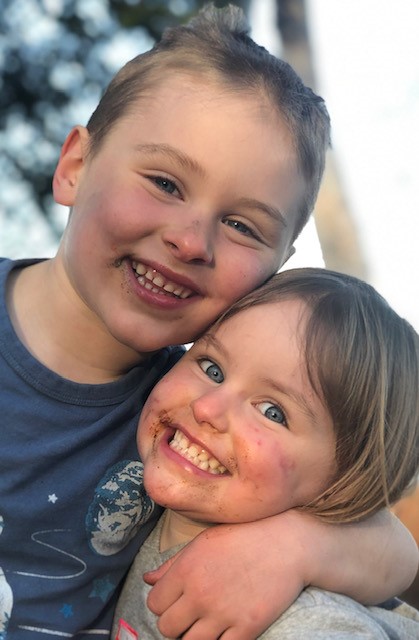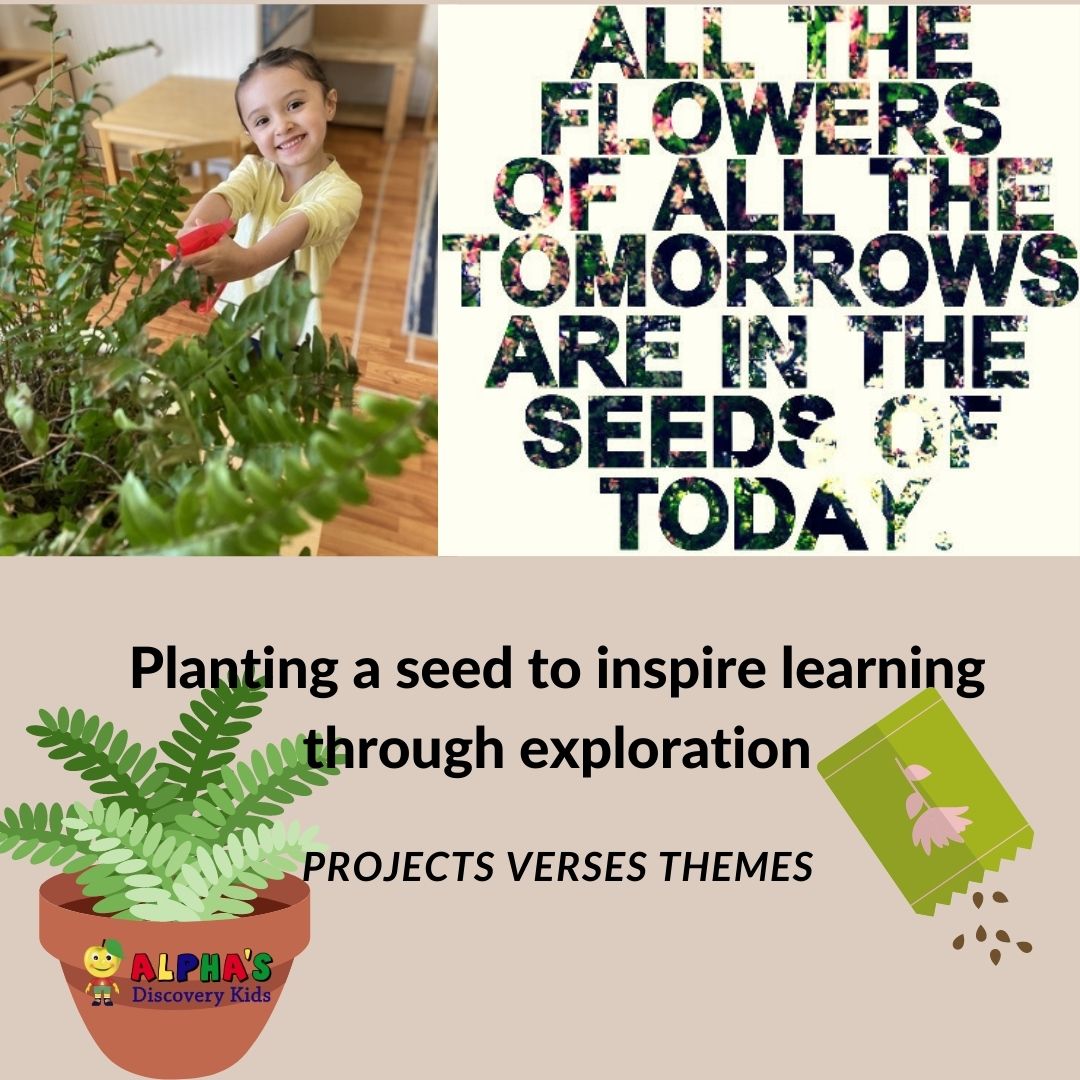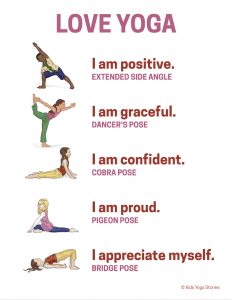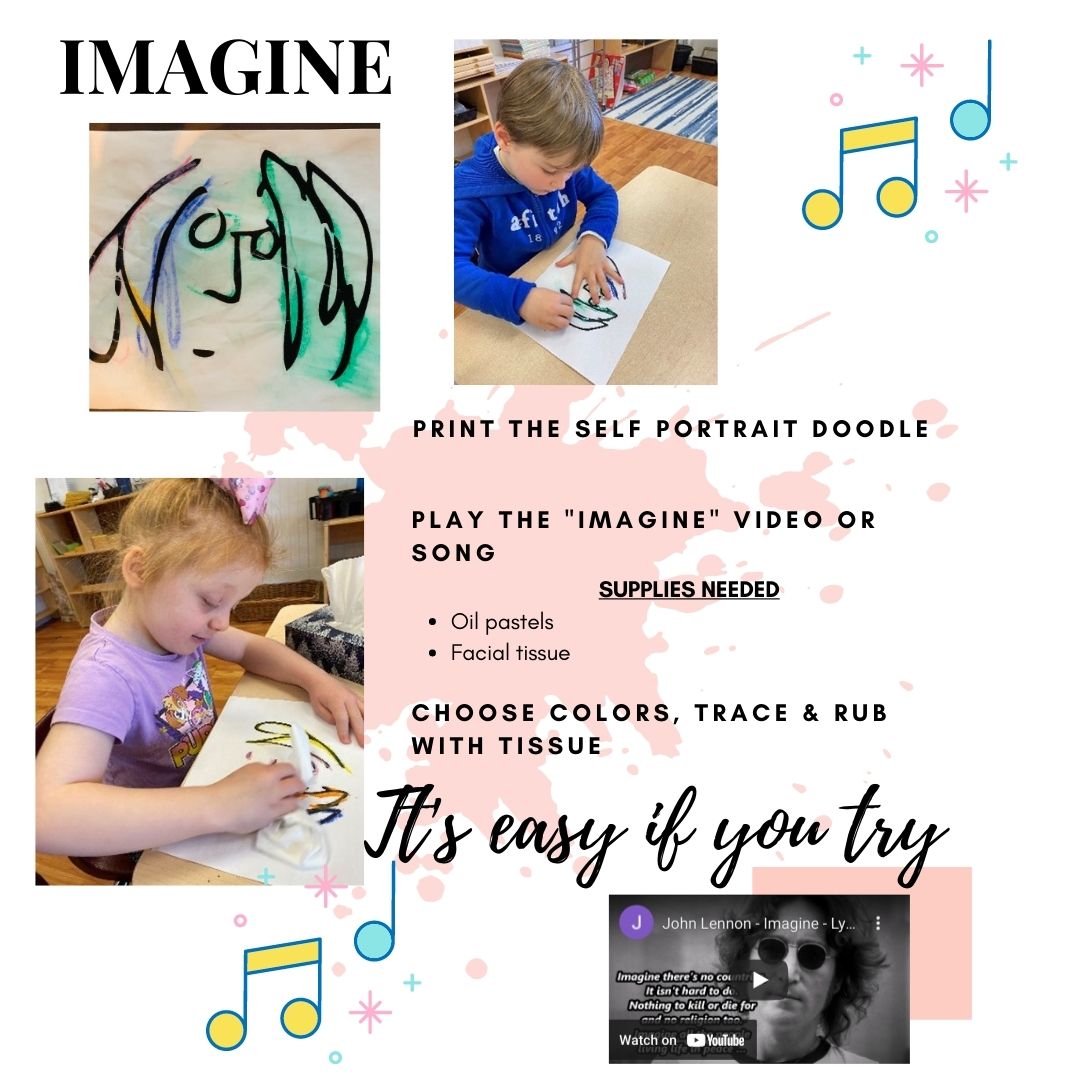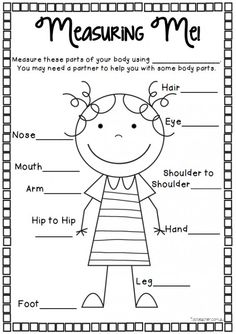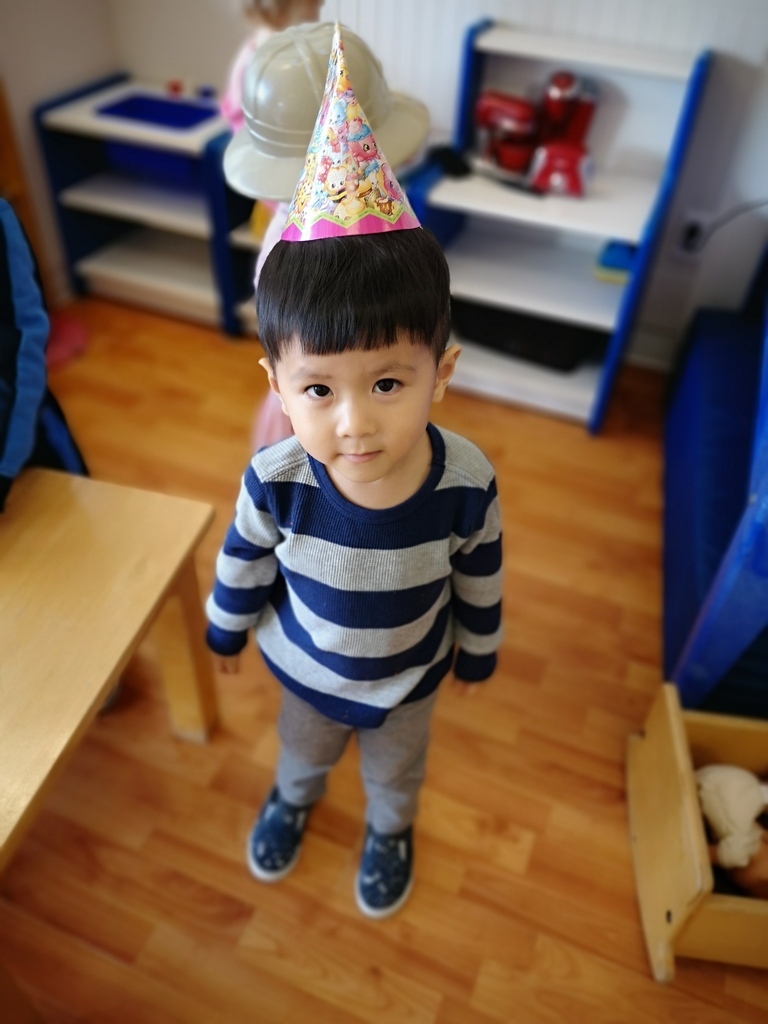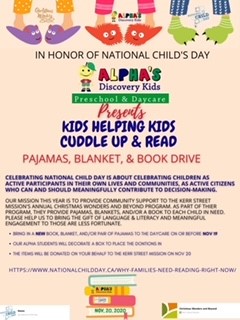6 ways to raise compassionate kids
6 ways to raise your children to be giving, caring and compassionate kids
How do you teach your child to be compassionate? This may sound like a difficult task, especially when you may have a hard time even getting them to share. Here are a few ways to you can begin to instill this positive character trait.
1. RECOGNIZE AND AKNOWLEDGE GOOD ACTS
Positive reinforcement works well with kids. Encourage your child’s efforts to give back or share with others. If you see your kids being generous even in the smallest way, praise them and acknowledge the gesture.

2. LEAD BY EXAMPLE
Kids are visual learners, and the best way to teach them about giving back is by modeling that behavior yourself. You have to give to teach your kids to give.
3. BEING A GIVING FAMILY
Along with setting a good example for your children, have conversations about giving. Be mater of fact about it. Use phrases like “We give to others because we can.” Explain to them why you’re giving time or money to a particular cause and explain why. Actions speak louder then words and there’s no better way to teach kids about giving back than through action.

4. MINDFUL MONEY CHOICES
Teaching your children about setting aside money to give to important causes is the key to raising socially conscious kids. This is also a great well to instill self-regulation and prevent impulsiveness. Along with talking to them about money, teach your children about the value of using a portion of their money to give back to the community and donating to charity.
5. KINDNESS AND TIME ARE EQUIVILANT TO MATERIAL THINGS
Many of us are not able to donate money to charity but that doesn’t mean we can not still teach and instill generosity.
Teach your children the value of giving their time and energy to others. The value of kindness and even the generosity of a smile, opening a door or helping someone pick up something they have dropped holds so much value. Teach your children not to hesitate to jump in and help someone in need.

6. BE A SAFE PHILANTHROPOIST
It’s always important to teach children safe perimeters with respect to giving. There are always reasonable safety concerns to consider when giving whether it be money, time, gestures, material items or food.
A few safety tips to consider sharing based on your child’s age or development
The STOP, THINK, ASK policy is a good one to instill in your children of any age because as we know even kind-hearted adults can be but at risk if they are not careful. Here’s some safety considerations:
• Sharing food can be dangerous because some people have allergies (ask an adult first)
• Smiling at a stranger or saying hello is safe but ask an adult before talking to or helping a stranger
• Ask an adult to help you choose a charity before giving money or valuables.
These tips will go a long way to raising compassionate kids.
For more information about how we foster compassion through our curriculum, click here.
Water Safety Tips
Water Safety Tips
Water safety is an important topic that we must educate ourselves about as parents. Knowing how to be safe in and around water is one way to keep your family safe. While water safety is somewhat of an unpleasant topic, it continues to be an important one. Even if you think you already know everything about water safety, take a moment to review these educational tips. I few minutes of reading may help to save a life. Knowing the risks is the key to preventing injuries and or death.
Children are naturally drawn to water and quickly discover the fun of splashing in it. Sensory play especially with water should be encouraged but ensuring that this is done safely is essential. You can never be too careful when it comes to water safety whether you are inside or out.
Close attention needs to be placed on safety around water to prevent drowning, scalding or electrocution. Regardless of your child’s age – whether infant, toddler preschoolers, school age or if you have young, curious, or even clumsy pets, it’s important to know that the number one safety tip is Supervision.
Here is why …. Did you know that babies can drown in as little as just 1 or 2 inches of water? It can happen silently, and within seconds, especially infants, because they don’t have much neck and muscle control.
Remember: Never leave your child alone or in the care of another young child in or near water—not even for a moment.
Most child drownings inside the home occur in bathtubs, and more than half of bathtub deaths involve children under 1 year of age.
Here are a few simple safe water tips to live by and share with anyone who cares for your child.

Bathroom water safety tips:
- Put toilet lids down. Install safety latches or locks on all toilet seat lids to keep curious little fingers from lifting them.
- Pull the plug on the tub. Consider removing the bathtub drain plug when it’s not in use to avoid the tub filling if a child turns on the faucet.
- Keep the bathroom door closed. As an added layer of safety, use safety latches or doorknob covers to keep bathrooms closed.
- Check the water temperature. Before putting your baby in the bath, check the water temperature with your wrist or elbow. Tap water that’s too hot can quickly cause burns serious enough to require a hospital visit or even surgery. In fact, hot water scalding is the top cause of burns among babies and young children.
- The hottest temperature at the faucet should be no more than 120 degrees Fahrenheit to help avoid scald burns. In many cases you can adjust your water setting to not go above this temperature.
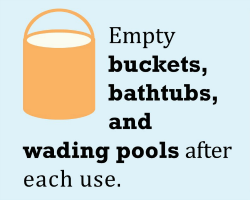 Outdoor water safety:
Outdoor water safety:
- Never leave a filled, open-top water container unattended. Whenever they’re not in use, be sure to completely empty any liquids in containers such as:
- buckets and pails used for cleaning or painting
- wading pools
- coolers with melted ice
- large water bowls for pets
- trash cans or recycling bins that may collect rainwater
- secure swimming pools, including large, inflatable above-ground pools and other temporary pools, should be surrounded by a fence on all 4 sides.
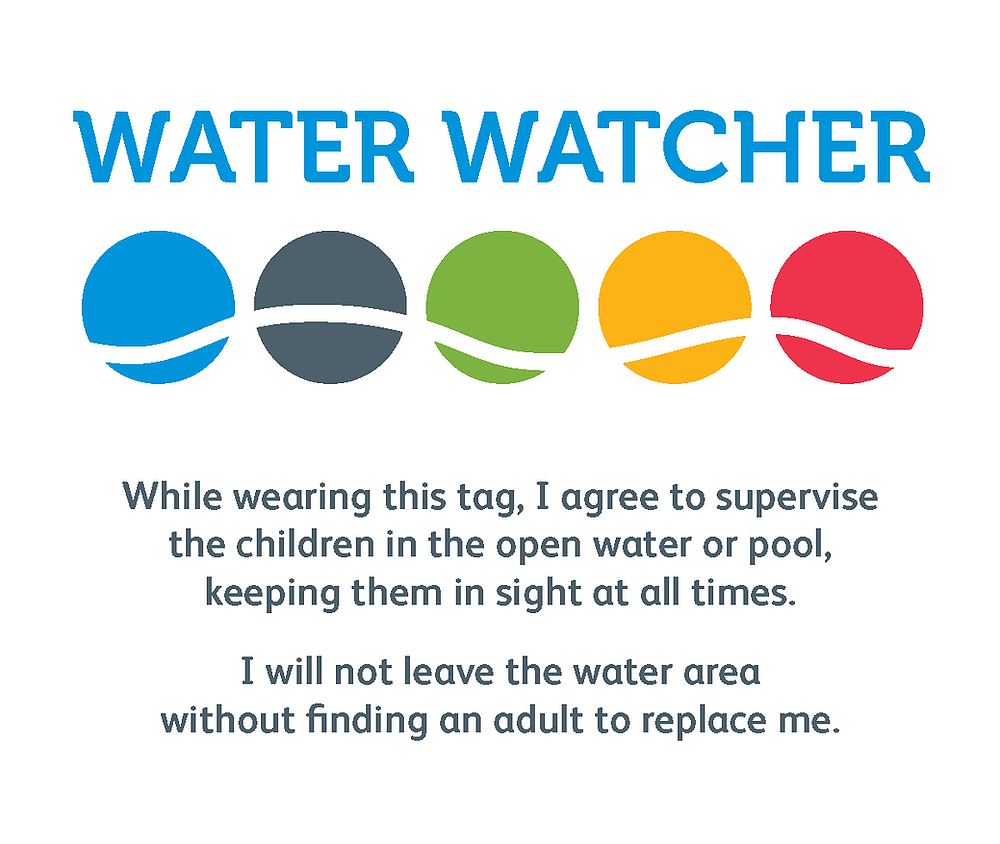 Pools:
Pools:
- Assign a qualified Adult or youth with life saving certificate to supervise children
- Ensure life jackets and flotation devices are used with supervision
- Ensure Life preservers are readily available
- Use a water watcher sign. Assign a “water watcher” to supervise at all times and ensure they know their responsibility.
- Pool fences should: be at least 4 feet high and have no opening under it or between slats more than 4 inches wide.
- Check the gate frequently to be sure it works and keep it always locked.
- Keep toys out of the pool area when not in use so that children are not tempted to try to get through the fence.
- Be sure to always cover and lock hot tubs and spas right after using them.
Use touch supervision
- Have a towel within reach so you can always keep a hand on your baby so that you are within arms reach at all times.
- Before your baby begins to crawl or walk, check your home and surrounding area for any other potential water dangers.
![]()
Water and electricity don’t mix
- Be sure to keep electrical cords, battery powered devices and other power sources away from water and out of the reach of children.
It’s important that you teach your children water safety!
- Teach children the guidelines, rules, and boundaries around water that they will understand and follow.
- HAVE FUN AND PLAY SAFE!
Mindful Mud – An Essential Play Experience!
Mindful Mud – An Essential Play Experience!
While the idea of getting messy to some may be unappealing, especially a parent or caregiver that has to clean up the mess! For those that may be skeptical, consider all the benefits of playing in the dirt.
The earthy goodness of mud gives our kids an opportunity to engage in messy play, practice mindfulness and connect with nature. Think of a time when you made a sandcastle and suddenly lost track of an hour. That was you, feeling the effects of mycobacterium vacate. This is a big word for the microscopic bacteria in dirt that increases the serotonin level in our brains, making us feel happy and relaxed.
Our young technologically savvy generation of kids are just not getting enough time to play outside – especially with online learning and technological distractions. While you can simulate many experiences virtually these days, playing in the dirt is not on that list.
Have you ever noticed that children who play outside laugh more? And laughter leads to feeling good! Kids who play outside also grow in their character development: they become more adventurous, more self-motivated, and they are better able to understand and assess risk.
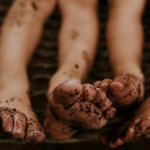
THE SCIENCE OF MUD
- MUD INCREASES BRAIN ACTIVITY– When children play with mud they use all of their senses, resulting in a highly stimulated and active brain.
- MUD INCREASES PHYSICAL ACTIVITY-When children play outdoors, and in mud, the incidental movement and physical activity increases, helping children maintain a healthy lifestyle and develop their physical literacy.
- MUD REDUCES ALLERGIES & ASTHMA SYMPTOMS -Dirt is also great for the immune system, especially in children. Research has shown that early exposure to naturally occurring microbes in soil will help build stronger, more disease-resistant kids.
- MUD PLAY BUILDS CREATIVITY – The open-ended nature of mud play is perfect for the developing brain. There is no end to the creations, ideas and games children will invent. During this type of unstructured, outdoor play, children are not only exercising but are building their ability to form ideas, problem solve, and think critically, as well as be innovative and inventive.
Here are some ideas for your children:
- If you want to control the mess a bit or have limited space, try a mud kitchen !
- Give your child a bucket and a shovel and set them in the dirt. See what happens.
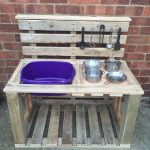
If you really want to control the mess, you can also create a DIY mud sensory bin. Check out our blog on how to create DIY sensory bins.
Lockdown Staycation Ideas – Indoor Camping!
Lockdown Staycation Ideas
5 Easy Steps to a low cost and low mess indoor camping experience
Thinking up ideas for a staycation is more challenging then ever with lockdown and stay at home orders in place. Planning ahead can be difficult with the uncertainties of the pandemic. We all look forward to long weekends. In Canada, May 24th is a holiday in honour of Queen Victoria’s birthday and is considered the first long weekend to kick off the summer season. For many Canadians, it means the beginning of camping season, gardening and local festivals, concerts, outdoor markets and picnics. While we can still enjoy some of these outdoor activities, the options are limited by the restrictions of the pandemic. Here’s a staycation idea that actually works really well during a pandemic.
Have you every tried camping in your own home?
Chances are that there is more then one of you out there thinking that even camping in your backyard sounds like a task you are simply not up for.
What if I told you that you are not the only one? It doesn’t have to be difficult. And it can be a lot of fun for both you and your kids!
What if I told you can now camp with the kids, with no packing, no driving, no paying for campsite rental, no bugs, no questionable bathrooms, and you can sleep in your own bed?
This is an opportunity to glam it up with your own style and it will certainly be a post-worthy experience to share – Don’t forget to tag us.
Here’s 5 Easy Steps to create that perfect at-home indoor camping experience!
- FORT – Set it up!

No camping experience is complete without a tent. Depending on the age of your children, you can choose to make this an all-hands-on deck project with the children helping set up your camp site or you can make it a surprise. This can be your child’s bedroom, basement or living room area. Notice I am not mentioning outside 😉!
Make it -check out these links for tents you can create with minimal supplies or talent.
https://www.artbarblog.com/easy-forts/
http://www.thriftyandchic.com/2016/01/diy-4-sided-drop-cloth-teepee-for-20.html
Add mini lights & decorations for a pitch-er perfect tent!
2. FOILAGE
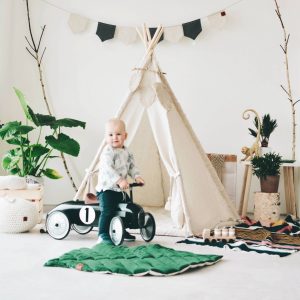
Bring the outdoors in! This is really just an extra little thing you can do to bring the outdoors in and enhance the camping experience.
You can gather Outdoor items, stones, logs, branches, indoor or outdoor plants to place around the “campsite” or even setup an artificial tree.
3. FIRE-Spark it up
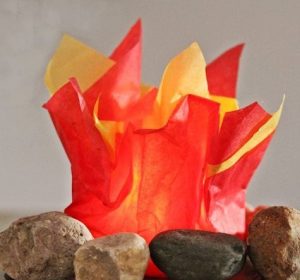
One of the best parts of camping is the bonfire! A bonfire is the perfect place to gather round and sing a campfire song, or tell funny stories. It’s also a great place to read books.
Make it- click on this link for an easy way to build a crafty campfire.
http://aboutfamilycrafts.com/how-to-build-a-campfire/
4. Food- Feed the fam!
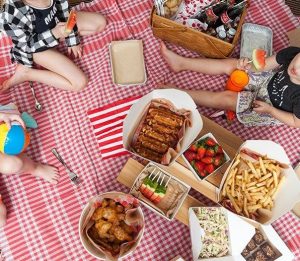
If you don’t have a fireplace to roast marshmallows the next best thing to the campfire is a BBQ. Grill some hamburgers, hot dogs, corn or make simple PB&J sandwiches. You can even roast marshmallows by holding a stick above the heat of the BBQ grill.
Whatever you decide to do – Keep it simple!
Here are 3 S’more options to enhance your camping staycation
Make it-Microwave Smores- https://shelfcooking.com/smores-recipe/
Smore snack bag- https://ziploc.com/en/Recipes/Sweets-And-Desserts/S-Mores-Mix
Make sure you take a nice walk after those sugary smores and tire out those kiddo’s so everyone gets a good night sleep including Mom & Dad!
5. FUN!

Last but not least, Have Fun!!!
Hopefully by now the kids are tuckered out and ready to retire to their sleeping bags. Before they do, make it dark, turn on those string lights, lamps and flashlights and play with the shadows. Add in some soothing nature sounds and soothing music too!
You can even make your own stars on the ceiling with a flashlight! Just cover the flashlight with black paper and cut out the stars.

More ideas to add to your indoor camping experience:
Read some camp related stories
https://www.pre-kpages.com/books-camping-preschool/
Shadow puppets
https://whereimaginationgrows.com/exploring-light-with-shadow-puppet-play/
Starry sky flashlight
https://happyhourprojects.com/make-a-starry-night/
To learn more about Alpha’s Discovery Kids Programs, click here!
Planting a seed to inspire learning
Planting a seed to inspire learning
Planting a seed is the simple act of setting a process into motion – both in a garden and in a classroom. As educators in the classrooms, we are always planting seeds to spark children’s curiosity, inquiry and discovery. With an emergent curriculum such as ours at Alpha’s Discovery Kids, students are empowered learners, and the teacher takes the journey along with her class.
In many cases, children spend a great deal of time in a childcare setting with limited experiences in the world, especially during a pandemic. Planning based on the children’s interests is not effective all on its own. That is why we introduce projects to expand on the child’s learning. As educators of young children, it is our responsibility to empower children and to make them a big part of their own learning. It is important to understand that it does not necessarily matter where the topic originates from, if the direction it takes from inception follows the lead of the children.
One of the ways we do this is by providing and introducing rich, developmentally appropriate materials and new topics and concepts that the children may not be exposed to yet. By providing engaging materials that encourage exploration and creativity, we can provide opportunities that are open¬-ended and through these experiences provoke further interests. The materials can be purposeful, intentional and project based without becoming teacher directed.
We are continually plantings seeds in the minds of the children to inspire curiosity with the goal of teaching the children something new. Our educators have gained confidence in knowing it will take form without direction. A seed cannot stay a seed forever once planted. When cared for with nourishing soil, rays of sunlight, and water, they change shape and start to become whatever it is they were meant to be. We apply similar parallels to our approach to child development and learning. Like all things that grow, plants, trees, flowers, we want them to flourish!
To find out more about our Four Pillars of Learning curriculum, click here.
Follow us on Facebook or Instagram to see the curriculum in action. We offer many ideas that you can also try at home!
Heart-centred yoga for kids
Heart-centred yoga for kids
Valentine’s Day is almost here. It’s a great time to stop and think about what love means to each of us. When we ask the children what they love they often tell us “Mommy & Daddy ” and sometimes “cookies”. Another great way to honor Valentine’s Day is by opening our hearts through creative movement.
Although at this time of year, we often focus on loving others, self-love is also important. In fact, it’s often said that you can’t love anyone else until
you love yourself first. Self-love starts with taking care of our bodies, minds and spirits and being healthy.
At Alpha’s Discovery Kids, we are packing our student’s toolboxes with mindful awareness skills through our Four Pillars of Learning curriculum. Yoga poses are a great way to connect to our body, mind and spirit. WE LOVE YOGA and this adorable series of poses really make our hearts skip a beat.
Here’s a poster to assist you with your poses.
REMEMBER It’s called practice because it takes time to learn. As always don’t forget to BREATHE and be safe.
xoxoxo
For more lovely kids’ yoga ideas, check out www.kidsyogastories.com
For more information about mindfulness check this out: https://inlpcenter.org/mindfulness-training-experience-the-benefits-in-your-life/
For more information about how we teach mindfulness with young children, check out our Youtube Video.
Imagination – Exercise your Creative Muscle
Imagination – Exercise your Creative Muscle
Imagination is so important – especially during this pandemic – given the many thing we can’t do and would like to do! At Alpha’s Discovery Kids Preschool and Daycare, we foster children’s’ natural curiosity and imagination.
Recently, we did an art/music activity which encouraged children to imagine. We played child-friendly Beatles music and of course the John Lennon song” Imagine”. The children were given oil pastels to trace the outline of the iconic John Lennon scribble face. This was a free and open process but also was a great fine motor activity as the children followed the lines of the original piece. Then, they used dry tissue to rub the paper and blend the colors. The effect was so simple and so beautiful!
One of our curious students asked about the singer John Lennon. The teacher explained that he was an artist who made music and tried to help people to see the world in a beautiful way. He sang about equality, kindness, and a world where there was peace and harmony. We talked about imagining the world to be a better place. We used this as an opportunity to reframe the pandemic through our imaginations. While some of us are simply counting the days until the pandemic to be over, others have chosen to try to imagine and dream of all the things they will do when the pandemic is finally behind us. It’s about using our imagination to look at the world in a positive way – even during a pandemic.
Children are used to looking at things for what they can be, instead of what they are at face value. A cardboard box can be a rocket ship, or a robot costume. We can learn a lot from how children think. As adults, when we experience criticism and feedback, we become less open to playful and creative thinking. And, in turn, we lose our creative freedom. Creativity is a skill you can learn. It is a muscle. The more you use it, the stronger it gets. This pandemic is the perfect opportunity to use that creative muscle and just imagine! It is often in times of constraints, that we become the most creative!
Try this activity with your child and have some fun!.
#1 Think of 2 things you did to survive during the Pandemic with the restrictions in place.
#2 IMAGINE what you will do when restrictions are lifted. There are no limits!
Click on our curriculum page to see more about how we foster curiosity and creativity through our Four Pillars of Learning.
M is for Math
M is for Math
At Alpha’s Discovery Kids we understand the importance of educating children using a wholistic approach. Math is a key component of our STEAM (Science, Technology, Engineering, Art and Math) program which is the second pillar in the Four Pillars of Learning curriculum.
Math plays a major role in a child’s development and helps children makes sense of the world around them. Children between the age of one to five years old are beginning to explore patterns and shapes, compare sizes and count objects.
Building numeracy skills is one of the first things you will do with your child. Many children learn to count from 1-10 by the age of 3 years old. There are so many opportunities to count with children daily. You can count the cars on the road or the plates at the table or blocks in a tower. The key is to incorporate counting with everyday objects in a hands-on way so that it makes sense to a child and they can visually see the objects being counted. Once they have the concept down, you can start to introduce the actual written numbers so they can associate the concept with the actual number.
Using number concepts and skills to explore their surroundings will enable them to problem solve in the future. It helps them to develop confidence in their ability to think things through and develop a process that makes sense to them.
Problem solving skills can be a difficult concept for many children. Supporting this process without doing it for them can support growth and development. It can assist with a sense of accomplishment. Helping children to create connections to discover various relationships. (e.g. characteristics, size, colour, shapes)
Measurements can include ordering and comparing objects to figure out time, weight, length and graphing. I love to use measurement to teach so many math concepts. Here’s a simple activity you can do with measurement. Take out a measuring tape and measure your hand and your child’s hand. Compare the size of your hand to your child’s and look at the number (size) of your hand vs. your child’s hand. This will help your child to understand bigger numbers and smaller numbers. You can also count the numbers of the measuring tape. You can continue this activity with your feet and other body parts as well as your whole self. It’s a great way to teach numeracy and comparisons of numbers.
Classification can be turned into a fun game that allows children to make like items. You can provide them with a blue, red and black basket. Then lay out multiple objects in the same colours. Ask the children to sort them into their proper baskets by matching the colours.
When you stop and think about it, math is used in many every day tasks performed by young children. Anything they do can be counted and documented.
As you can see, Math does not have to be difficult! It can be fun and easy! To find out more about our Four Pillars of Learning curriculum, click here.
Unique Way to Celebrate Birthdays
Unique Way to Celebrate Birthdays
Everyone wants to be remembered and cherished on the special day that they were born and young children are no exception.
The Montessori “Celebration of Life” is a lovely way to celebrate a child’s birthday in a daycare or school setting. Children love to hear about the journey from their birth to the present day. They want to hear stories, look at photos, and remember wonderful memories. They want to know how cherished they are, and how our life and world is better because they were born into a family and now
belong to our class/ group or school. The Montessori “Celebration of Life” is a wonderful way to celebrate birthdays at school, whether or not
you follow the Montessori philosophy.
Here’s how it works. For the preparation, the parents of the birthday child are asked to bring in a picture for each year of the child’s life starting
with a newborn photo. For example, if the child is 3 years old, 4 pictures are required – Newborn, 1st year, 2nd year and 3rd year.
All the children make a large circle around the sun that has been placed on the floor. Around the sun are each month of the year from January to December. The teacher then begins to describe the birthday child’s journey as she holds up the first picture. The teacher discusses the milestones and accomplishments that have been achieved over each 12 months for the birthday child. They then sing the song below as they hold a globe and slowly circulate it around the sun and stopping once their hand returns to the current month.
This is repeated for each year the birthday child has been on earth. This process places value on the child’s accomplishments and achievements as they have developed since birth.
(to the tune of The Farmer in the Dell):
The earth goes around the sun,
The earth goes around the sun,
The earth goes around the sun,
It takes 1 year to go around,
Another year is done
Then to complete the celebration the following can be sung to the birthday child (to the tune of Happy Birthday):
We celebrate your birth,
And your place on the Earth,
May the sun, moon, and stars,
Bring you peace where you are!
For more information click here.
National Child Day – Cuddle Up and Read
National Child Day
November 20th of every year is a significant day for children in many countries of the world. It is National Child Day. This is a day that celebrates two historic events. The first being the signing of the United Nations (UN) Declaration of the Rights of the Child in 1959.
The second being the adoption of the UN Convention on the Rights of the Child in 1989. The combination of these two documents officially created, the UN Rights of the Child. By ratifying the United Nations Convention on the Rights of the Child in 1991, Canada made a commitment to ensure that all children are treated with dignity and respect. This commitment includes the opportunity for children to have a voice, be protected from harm and be provided with their basic needs and every opportunity to reach their full potential.
Recently, we have been teaching the children about being thankful , grateful and honoring others with recent calendar events such as Thanksgiving and Remembrance day. We want to continue to instill these concepts further by extending our students understanding towards empathy and compassion for others through relatable topics. We will do this by discussing the things that make us comfortable and safe. Things like some time and a hug from a loved one, a warm blanket, cozy Pajamas and a nice bedtime story. Here’s a link with some great information about why reading with a child is important.
To celebrate National Child Day this year, we will have the children become active participants in this “Cuddle Up and Read” outreach project by:
• Children will decorate a donation box called “The Helping Hands Bin”.
• Children will place the donated items such as books, blankets and pajamas they have brought in and make a wish for themselves and for other children in need.
• We will celebrate our accomplishments by having a Pajama Party on November 19th
The items will be donated on National Child Day to the Kerr Street Mission. The items will be added to their Christmas Wonders and Beyond program where they provide, toys, gift cards and P.J’s to each participant in the program.
I would like to thank all our families and teachers for their participation and generosity in advance!
Let’s all cuddle up and read!



